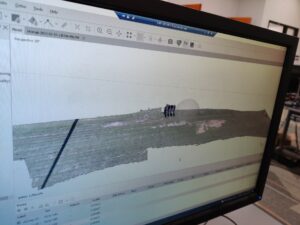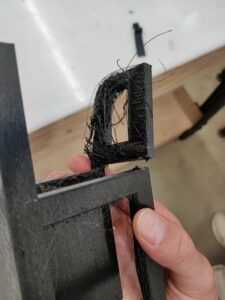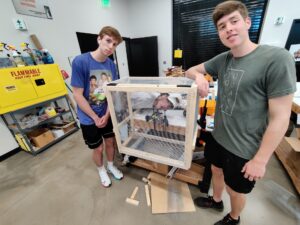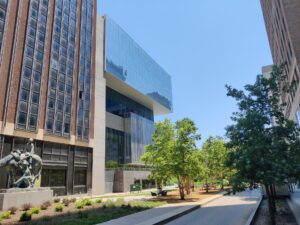Hello again! My name is Christopher Pohorecki and this is a recap of my fourth week at my OSU Aerospace Engineering internship! As you may know from my previous posts, our group has been tasked with creating a bi-copter capable of VTOL flight and horizontal flight. Our concept will then be tested against a replica of NASA’s ingenuity, these tests include how large of an area each drone is capable of mapping out.
This week was shorter than usual as OSU was closed on Monday. Our Tuesday started with us running the photogrammetry software to see if we could still map an area out without geotags on our photos. Turns out we can still use the software to map out an area! I was not expecting it to work whatsoever, however as you can see it gave us a high-quality 3D map of the area we photographed. This will allow us to use our plug-and-play orange run-cams, making our project much more manageable. For our next step, we began building our wing, and printing parts for our systems.
On Wednesday, we received all our parts to design the final components based on our previous prototypes. For example, our thrust vectoring system that we had already designed needed to be upscaled and adjusted to fit our flat motor. We then began printing our thrust vectoring system. After 6 hours of printing our 3D printer for some odd reason began shooting filament everywhere and ruined our part! We then reset the printer, but our supervisors told us we have to wait until Friday to print our next part, as others need to print their own parts. We then began the construction of our final wing. Using a large foam board I made small cuts in the foam to mark how I would size and fold the wing. I then used a strong piece of wood and laid it across the wing so it wouldn’t bend. I then folded and glued the wing together.
Finally, we were ready to test our motors and props. However, an engineer quickly pointed out that testing one of our motors would be dangerous as the test would have to be conducted inside. We were then tasked with creating a safety box so that motor tests could be carried out safely. My team and I quickly compiled a list of parts that we needed from local Lowes to build the box, we then picked up our parts, and began construction of our box. Using 35 feet of 2 x 1 we created a box wrapped in chicken wire as to not constrict airflow. We were now ready to test our props! We began by soldering our motors to an Electronic Speed Controller capable of taking the amperage our motors required. We then found a battery capable of giving us the voltage necessary to power our system. We are now entirely ready to test our motors this upcoming Monday!
Throughout my week, I enjoyed spending time with my dad visiting Oklahoma City and going out to the movie theaters. I got to do a ton of shopping at Trader Joe’s! I really look forward to exploring more of Stillwater Oklahoma!





There are no comments published yet.